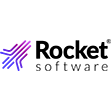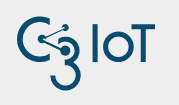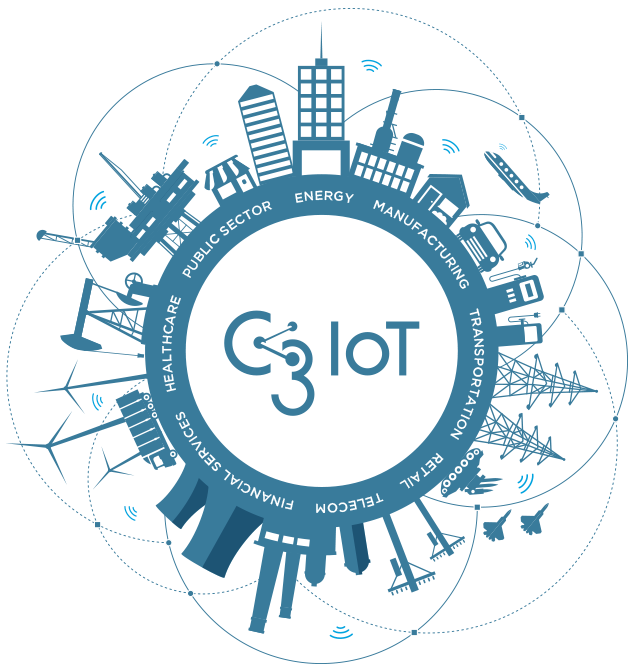
Q&A with C3 IoT’s Tom Siebel

Tom Siebel, who literally created the CRM market back in the 1990s, is now setting out to shake up the Internet of Things world with his latest endeavor, C3 IoT. Datanami recently caught up with the Silicon Valley legend to chat about technology trends, big data analytics, the potential of the IoT, and whether all the hype is justified.
Datanami: Tom, thanks for agreeing to the interview today. As the CEO and founder of C3 IoT, please tell us a bit about the company and what it does.
Siebel: We have spent eight years and a quarter of a billion dollars building a platform as a service that sits on top of cloud service providers like AWS, that enable customers to design, develop, provision, and deploy and operate three classes of applications. The first class is simply big data. The second class is big data and predictive analytics. And the third class is big data, predictive analytics, and IoT.
Datanami: Why IoT? What’s driving you to this particular phenomenon and this specific time?
Siebel: I don’t know what your position is, but this is what the world looks like to me in 2017, where we have four or five vectors that appear to be accelerating and converging and driving everything going on in computing in the next couple of decades.
Those vectors include social human interaction, elastic cloud computing, big data (not the amount of data, but the computational metaphor), artificial intelligence, and finally IoT. Those are the horses that we’re riding, and those vectors appear to be converging. So that’s kind of what we see as the big picture, and the general problem that we set out to solve. With those technologies, we’re able to solve classes of problems that were previously unsolvable.
Datanami: There’s a lot of hype around IoT. What’s your take on that? Will IoT be bigger than enterprise CRM?

Billions of data-collecting sensors are slated to be installed over the next few years (XanderSt/Shutterstock)
Siebel: It’s going to be a lot bigger. We’re seeing this sensoring of the value chain that is, I think, a very significant economic and social phenomenon. At the beginning of this century there might have been half a billion sensors out there. Today there are 19 billion and in five years there will be 50 billion.
This is across every industry — healthcare, travel, transportation, financial services, discrete manufacturing, automotive, aerospace — you name it. Value chains are all becoming sensored. I don’t think there’s any hype to it at all. It’s a fact. If you look at the rate of IoT adoption across these value chains, it’s exponential growth. It’s not linear.
I’ve been in the information technology business now for four decades. I’ve lived through minicomputers and mainframe computers and personal computing and enterprise computing and relational database technology, the Internet, the cloud. When I think of IoT and predictive analytics and big data, it looks to us like an entire replacement market for everything that’s taken place in enterprise application software.
Datanami: So IoT software will replace all the ERP and CRM applications and all the databases they run on?
Siebel: It won’t replace the databases. It will encompass them or envelop them. But with the CRM example, absolutely, it’s a complete replacement market for CRM.
The next generation of CRM is all about the device that you have in your front left pocket or maybe your hand. Once you agree to the terms of service – which neither you nor I have ever read but always agree to – now all of a sudden your service provider knows everybody you like, everybody you don’t like, what you’re thinking about buying, what you bought, where you live, what your gender preference is. There are masses of data that we can collect and we can use to provide value-added services to people in terms of next-best product or next-best offer.
That’s what CRM looks like in the future. I know something about CRM. Candidly, I invented it. And so the next generation of CRM is CRM meets AI. It does replace the CRM market but it doesn’t replace the database market. It leverages it. It replaces the ERP market, it replaces the supply chain software market and it replaces manufacturing automation, absolutely, 100% replacement.
Datanami: So all the business processes – from payroll processing to inventory checking to everything in between – all get IoT-enabled?
Siebel: All of the processes on the production line, in the mines, in the oil and gas value chains, are all being sensored. They’re using that telemetry to optimize the entire operation of the machine.
The largest and most complex machine ever built is the power grid, and the amount that’s being invested to sensor that value chain this decade, believe it or not, is $2 trillion. We can take all that telemetry, and using AI and various forms of deep learning and machine learning, we can optimize the entire machines.
Datanami: So you’re replacing a company’s roll-your-own approach to IoT development with a single soup-to-nuts, one-throat-to-choke play?
Siebel: That is what we’ve done. What people are trying to do is they’re trying to solve it by assembling scores to hundreds of independently developed, frequently open source components that do things like queuing, ETL, persistence, device connections, distributed file services, UI development, machine learning classifiers, and they’re trying to cobble this stuff together using structured programing to solve the problem.

C3 IoT serves the IoT needs of customers in the electricity distribution industry (Ai825/Shutterstock)
But to my knowledge, while some companies have spent billions of dollars, no one has yet succeeded. I have 22 large scale, big data, predictive analytics and IoT applications in production around the world.
The GEs and IBMs of the word are trying to build this out of a whole bunch of components and professional services, and then you have the CIOs of the world who have 10,000 programmers and are going to spend six years trying to build an application using the Apache open source Hadoop stack. To my knowledge, no one has succeeded. It’s very difficult, it’s very complex, and actually, I would argue that it’s impossible.
Datanami: What’s so different about your approach?
Siebel: We’re large scale enterprise system software professionals with some level of experience. What we did that’s different is we basically sat down with a white board and wrote a million lines of Java code. We just ground it out. We built something quite unique that allows people to deploy an application like this at least 10 times faster than any other alternative, and maybe infinitely faster, at a tenth of the cost.
Datanami: Vendors today are hesitant to build packaged applications out of the open source technology because the technology is changing so rapidly right now. How do you ensure that C3 IoT will stay up on the latest technologies?
Siebel: All of our components – whether they’re ETL or data persistence or queuing – are based on C3 types. You can think of that as an abstraction, a special class of object. The technical term is a Model Driven Architecture.
The relational database is exposed as a type. The key value store is exposed as a type. The ETL engine is exposed as type. Then we have the assets that the customer is interested in, let’s say in the utility case, a transformer or a substation. Those are also exposed as types.
All these types have a RESTful interface. So the only thing that a data scientist or an application developer has to deal with are these C3 types. There are thousands of these things that you need to be able to manipulate using the development language of your choice, maybe JavaScript, and the data science tool of your choice, whether it’s Python, R, Scala, or Digits from Nvidia.
Now this architecture is future proofed. So when we decide to replace the database engine, which we do from time to time for performance reasons, or we decide to replace the key value store, which we have done – all of the applications that are built on top of the platform continue to run
We’re finding in the market now, we’re running into the tail end of a lot of two- to five-year old, very expensive projects where people have tried to cobble all this stuff together into something that works. Not only is it very difficult – the complexity is on the order of 10 to the 13th – but it never worked. It’s dependent on all the components working.
Datanami: So you’re going to succeed at cobbling together all this complex open source technology where others have failed?
Siebel: Instead of telling the story I told you, what if I said we have a bunch of smart guys who raised a billion dollars and what we’re going to do is we’re going to go buy 70 companies — relational database companies, queuing companies, ETL companies, data science companies key value store companies, and UI development companies – and we’re going to cobble those open source code stacks into a unified federated system that works? You’d roll your eyes saying that’s fine and dandy Tom but you’ve lost your mind. Let me know when you run out of money and go out of business.
I would say the Apache open source Hadoop story is exactly that. The Apache open source stack, as you’re well aware, is about 300 individually developed applications in different languages with different storage technologies, different APIs, different computational metaphors, none of which were able to make it commercially, so none of them are commercially viable, that somebody uploaded to this flea market in the cloud.

(chombosan/Shutterstock)
Some of them do useful things. HDFS is a perfectly good distributed file system. Spark is great for in-memory virtualization of data, and Mesos is great as a virtualization layer. These things are all kind of useful. But the idea of some IT organization cobbling all that stuff together into a system that works is patently absurd. It’s more absurd than if I were to buy 70 commercially viable companies. It’s impossible.
CIOs, with all due respect, are trained to be pilots. They’re not aerospace engineers. They’re not trained to design and build aircraft. The CIOs who are pilots are trying to design and build aircraft, and their planes all crash.
Datanami: It sounds like you’ve been down this road before.
Siebel: When we were at Oracle and we introduced relational database technology to the world, the alternative was, well, what would it take to build it ourselves? A lot of people tried to do it. At Siebel when we introduced CRM software to the world, everybody said, why would I need you? I’m going to build it myself. We said, that’s fine and dandy. We’ll come back two years later after the CIO has failed.
Datanami: What’s to stop other vendors from building their own full-stack big data analytics and IoT systems?
Siebel: It took us eight years. We’re pretty experienced and we did it with a relatively small group of people – 50 or 60 people. What I’m seeing is everybody who’s trying to build it is trying to throw 3,000 people at it. But I don’t think you can build anything with 3,000 people in software.
Datanami: What’s the plan for C3 IoT? You’ve raised a bunch of capital money. Is an IPO in the future?
Siebel: I’ve been in the information technology business for a while. People want to know ‘What’s your exit strategy?’ I say, there is no exit strategy. We’re here to build a great company. Our goal is we’re going to establish and maintain a market leadership position globally in this space for these types of systems.
That sounds absurd because we’re a little two-bit company. But it’s no more absurd than when we said it at Siebel and there we had like 70% market share worldwide. We were nobody at Oracle when that started, and we established a leadership position there. That doesn’t mean it’s not an absurd statement. I’m just saying it’s not any less absurd than it was before. 
I think the most likely case is this is a standalone public company. We’re growing very rapidly. We’re cash positive. We have increasing number of very large and successful industrial use cases. So right now we’re concentrated on number one, making sure customers succeed, two scaling the business with highly talented computer scientists and data scientists and forward deployed engineers, and three growing the business and gobbling up as much market share as we can.
Datanami: Deciding which projects to tackle is one of the toughest challenges in big data. How does C3 IoT help customers figure out how to best utilize their data?
Siebel: The problems that were addressing today are really enormously exciting. Imagine that you’ve aggregated the healthcare records –radiology, hematology, pharmacology, patient history – for a population of 100 million in a unified federated image. Then you have a machine learning classifier that can tell these healthcare providers who’s predisposed to come down with breast cancer, diabetes, or whatever it might be. And you can do that with 90% accuracy. You can tell them, in the next seven to eight years, these are the people who are going to have diabetes.
That healthcare provider can then deal with it clinically in the next seven years, rather than deal with it in the operating room seven years down the road. The economic benefit of that is staggering, aside from the social benefit. People are healthier, happier, live longer and you’ve driven amazing amounts of costs out of the healthcare system. So some of these applications are really exciting, very rewarding.
Today that’s a big data predictive analytics problem. It’s not an IoT problem. But people know it is an IoT problem tomorrow. Because not only will we have all these healthcare applications, but people will have Fitbits and they’ll have devices embedded in their carotid artery, in their heart or cerebral embedded devices that will be generating telemetry one time or 10 times a second, so it does become an IoT problem. Not everybody is aware of it. It’s really exciting stuff. It’s not mundane. It’s very difficult. It’s very challenging and very rewarding, socially and economically.
Datanami: Tom, thank you for your time.



























